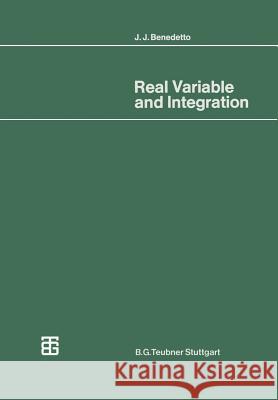Real Variable and Integration: With Historical Notes » książka
Real Variable and Integration: With Historical Notes
ISBN-13: 9783519022091 / Angielski / Miękka / 1976 / 278 str.
The subject matter in this book is a fundamental part of the basic graduate real variable course as I now teach it. Since there are several excellent texts that generally cover the material here, I'm obliged to render an "apologia" for the present text con cerning its content, presentation and existence. The theme of this book is the notion of absolute continuity and its role as the unifying concept for the major results of the theory, viz., the Lebesgue dominated convergence theorem (LDC) and the Radon-Nikodym theorem (R-N). The main mathematical reason that I've written this book is that none of the other texts in the area stresses this issue to the extent that I think it should be stressed. Let me be more specific. The problem of taking limits under the integral sign, that is, "switching limits," is in a very real sense the fundamental problem in analysis. Lebesgue's axiomatization which formulates and proves LDC in an optimal way yields the most important gene ral technique for examining such problems. This material is developed in Chapter 3. Shortly after Lebesgue's initial work Vitali gave necessary and sufficient conditions to switch limits in terms of uniform absolute continuity. Vitali's result led to research which has culminated in Grothendieck's study of weak convergence of measures. This latter material is usually not included in most texts; in particular, its relationship to LDC is not emphasized. This is the reason that I've included Chapter 6.











